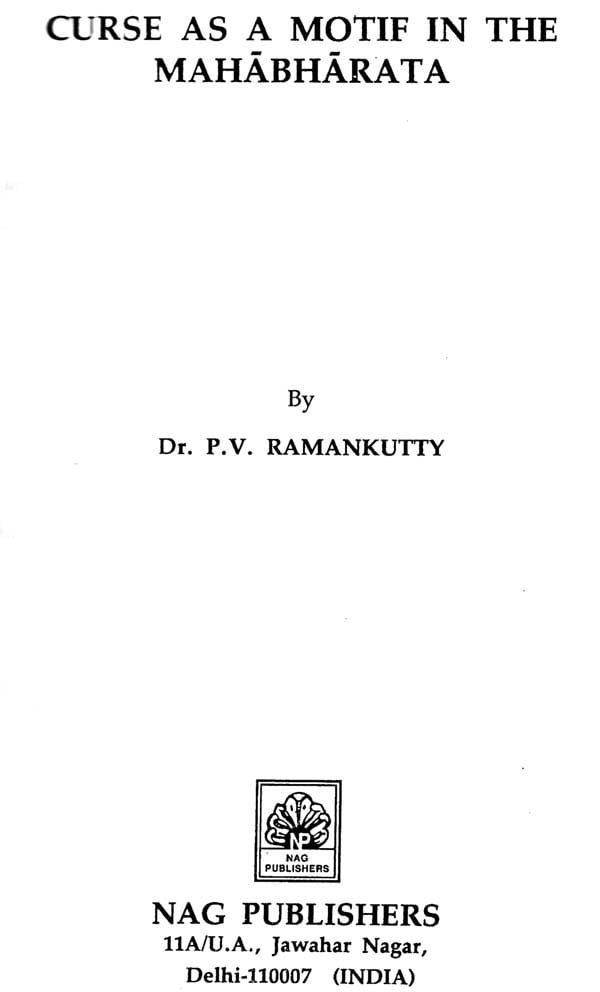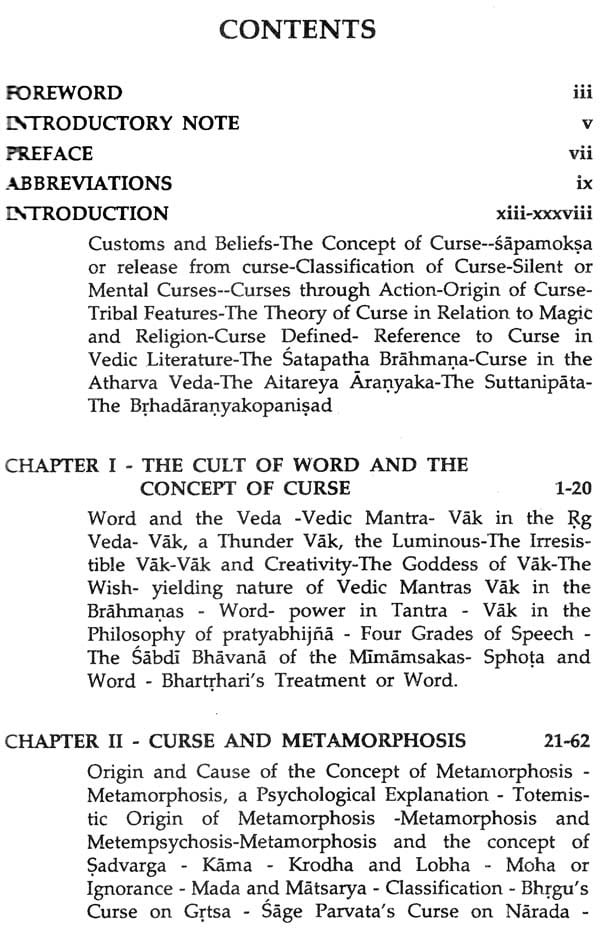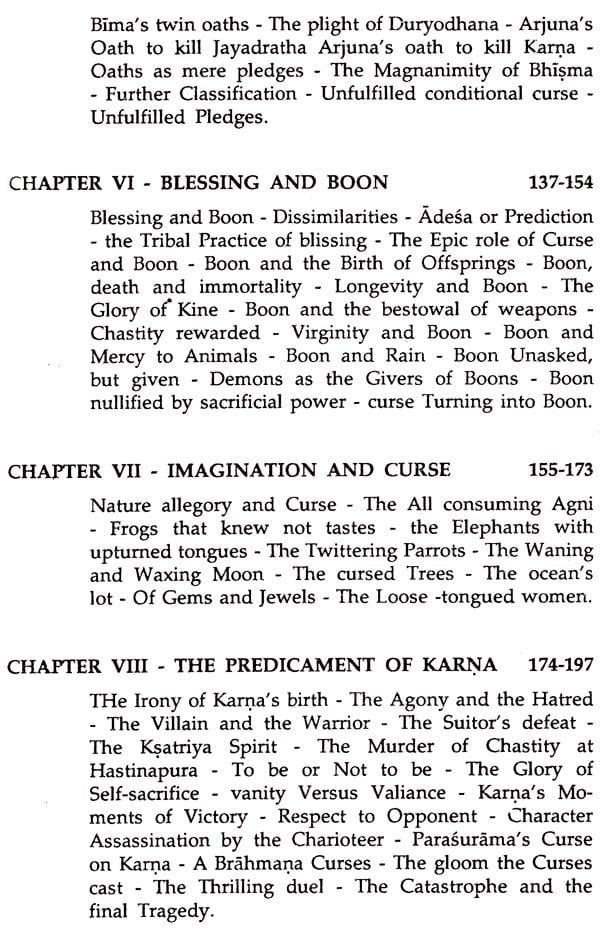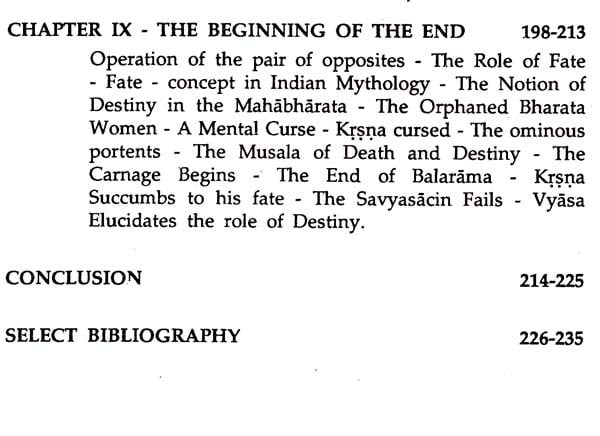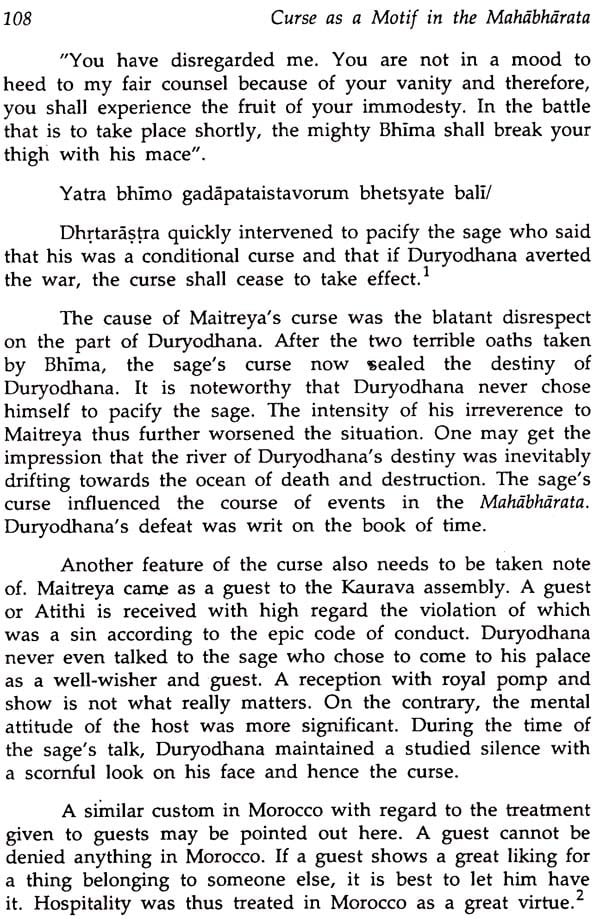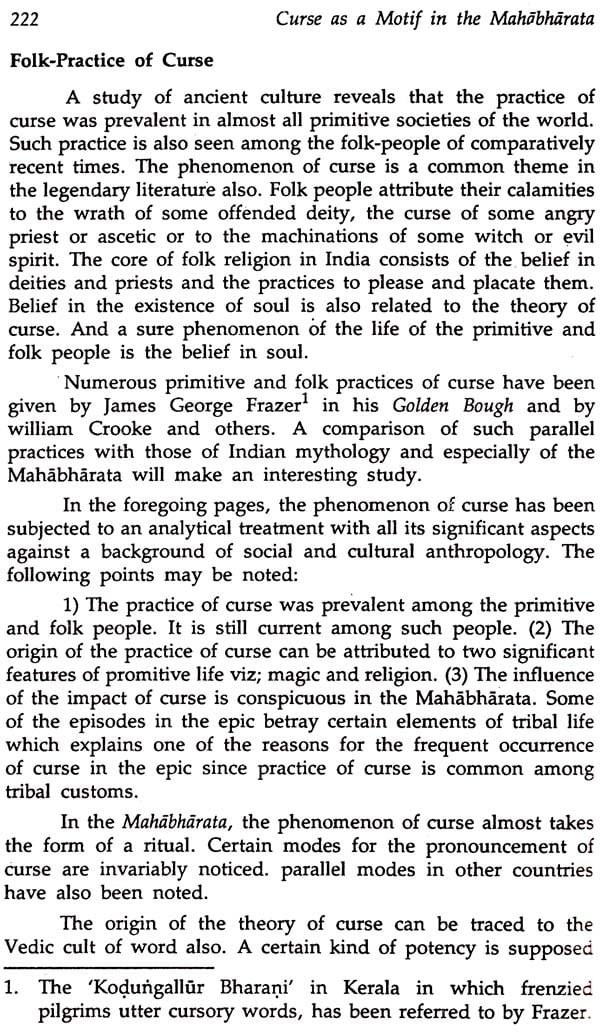
Curse As A Motif in the Mahabharata
Book Specification
| Item Code: | AZE434 |
| Author: | P.V. Raman Kutty |
| Publisher: | NAG PUBLISHERS |
| Language: | ENGLISH |
| Edition: | 1999 |
| ISBN: | 8170814324 |
| Pages: | 276 |
| Cover: | HARDCOVER |
| Other Details | 9.00x6.00 |
| Weight | 410 gm |
Book Description
Having done his post graduation in Sanskrit Sahitya from Sree Neelakantha Government Sanskrit College, Pattambi, Kerala, one of the Centres of Excellence recognised by the Government of Kerala and founded by late Punnasseri Neelakantha Sharma, renowned Sanskrit scholar and educationist, Dr. Ramankutty has been a teacher of Sanskrit for the last twenty-five years. He is presently the Head of the Department of Sanskrit of the Same College. He was awarded the degree of Doctor of Philosophy, from the University of Calicut in 1992. Dr. Ramankutty has several research articles to his credit and has attended a good number of National as well as International Seminars. He has translated some Parvas of the Mahābhārata from Sanskrit to Malayalam and published the same. The present work is Substantially Dr. Ramankutty's research thesis prepared under the supervision of Dr. K.N. Neelakanthan Elayathu, Professor of University of Calicut.
"Kim Kavestasya Kávyena Sarvavṛttantagamini Katheva bharati yasya na vyäpnoti jagatrayam"
There is a popular saying that there is nothing that is not met within the Mahabharata whether it be stories, discourses on religion and philosophy, ethics and fantasies. Numerous anecdotes were added from time to time to the central theme of the epic, some of them being earlier than the Ramayana itself. Thus we meet with the Nala episode in the Vanaparva which is definitely earlier than the epic of Välmiki. There Sitä who was about to follow Rama on his exile from the kingdom observes that she will follow her husband to the forest as did Damayanti follow Naisadha.
Naisadham Damayantiva Sita patim anuvrata There are many angles for the great epic which encom passes a wide range of topics and ideas. Curse is one of those motifs which attracts the attention of even a casual reader. We know that Kalidasa himself has pressed into service the motif of curse to lend twist to his poems and dramas. Púrnasarasvati, the commentator of Meghadüta in his inimitable commentary called Vidyullată, suggests that the motif of curse that occurs in the message poem must have been the result of the influence of Mahabharata. In explaining the word 'sapa'- meaning curse, in the very first stanza, the Kerala commentator cites two instances from the Mahabharata as possible sources of Kalidasa. He has referred to the curse pronounced by Kubera uppon three of his subjects Sthűnäkarna, Nalakübara and Manigriva.
The present work substantially represents doctoral dissertation the take this opportunity to express deep sense gratitude Dr. K.N. Neelakantan Elayath, Supervising teacher his valuable guidance. to Department Sanskrit, University of Calicut. also Prof. Sankunni Nair his valuable directions. also feel indebted Dr. Desamangalam Ramakrishnan, Department University of Kerala and Sri Dandayudhapani their encouragement and instructions.
It is now generally agreed that the Mahabharata is not the work of a single author and has undergone three different stages of development before it assumed its present shape. The Anukramani Parva itself illustrates how the epic was narrated by three persons during the periods. It was first narrated by Vyasa to his disciples and then by Vaiśampayana to Janamejaya and finally it is said to have been narrated by Ugraśravas to the sages in the Naimisa forest.
Several researches were carried out both by Indian and western scholars to trace the history and evolution of the Mahabharata to its present form. Thus, according to Macdonell, the original kernel of the epic has a historical background in the form of an ancient conflict between the neighbouring tribes 3 of the Kurus and the Pancalas.
**Contents and Sample Pages**
